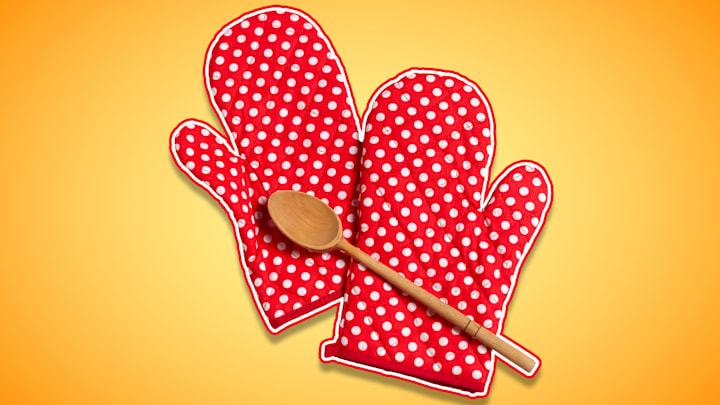Few things are better than a hot tray of brownies emerging from an oven. Few things are worse than suffering severe burns on your hands from retrieving those brownies. That’s why we have oven mitts and pot holders, those insulated fabric or silicone hand coverings that allow us to (briefly) handle surfaces that have been exposed to heat reaching hundreds of degrees.
There’s one surefire way to dramatically reduce an oven mitt’s ability to keep you safe, and that’s getting it wet. Here’s why.
The Danger of Wet Oven Mitts
Traditional fabric oven mitts work by inserting a layer of heat-resistant material inside the mitt. If the fabric becomes damp, or you place wet hands inside the mitt, the effectiveness of the heat barrier is dramatically reduced. That’s because water conducts heat. Its thermal conductivity is up to 25 times greater than that of air.
In a series of experiments performed at Oklahoma State University’s department of design, housing, and merchandising, researchers found that wearing a wet mitt that was exposed to 350°F or more could cause a third-degree burn in as little as one second.

OSU uncovered another deficit in fabric oven mitts: the stitching. In the mitt, when fingers were pressed against a hot surface, heat transferred faster near the stitched portion of the mitt.
OSU is hoping to petition mitt manufacturers to add warning labels to mitts cautioning users against these hazards and possibly redesigning mitts to bolster their safety profile. For now, it’s best to make sure your fabric oven mitts are completely dry before use. If you need to wash up, make sure your hands are fully dry before placing your hand inside one.
Mitts made of silicone should also be kept dry inside and out, though they don’t appear to be as susceptible to water as fabric mitts. While some are labeled as waterproof, others may have a cotton lining, and so it’s best to be on the safe side. Keeping them dry also reduces the chances of a hot pan slipping out of your grasp.
Why You Shouldn’t Use a Towel for Dishes Coming Out of the Oven
While some cooks like to grab a kitchen towel to handle a hot pan, this isn’t recommended. Towels are not designed for heat protection and the level of insulation they offer can vary depending on how the towel is folded. Worse, a loose towel can catch a flame on a gas range, and then you’ve got a real problem. Never use a wet towel for the task, as the same wet mitt principle applies.

Whether you choose to go fabric of silicone with your oven mitts, make sure you have a plan for your hot stuff. Know where you’re going to place a pan before taking it out of the oven. All mitts have a limited period of time for handling hot items—up to 10 seconds, with some far less—before you run the risk of injury. Remember that it’s harder to eat brownies when your hands are bandaged.
A version of this story ran in 2021; it has been updated for 2023.
